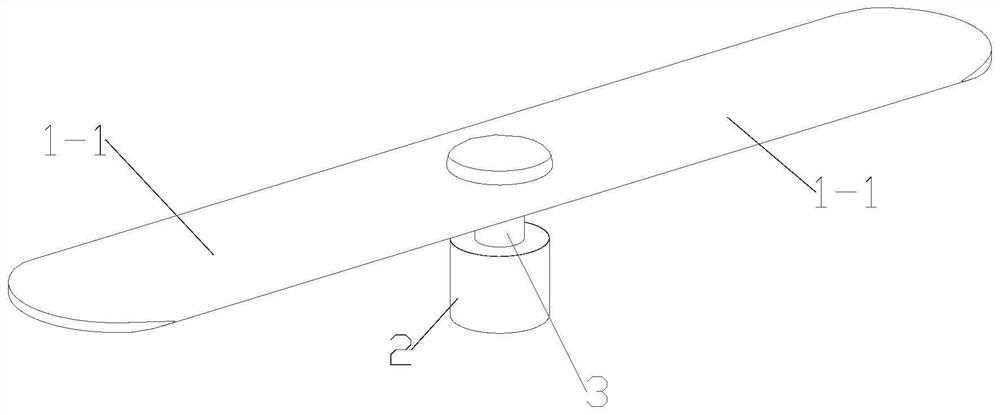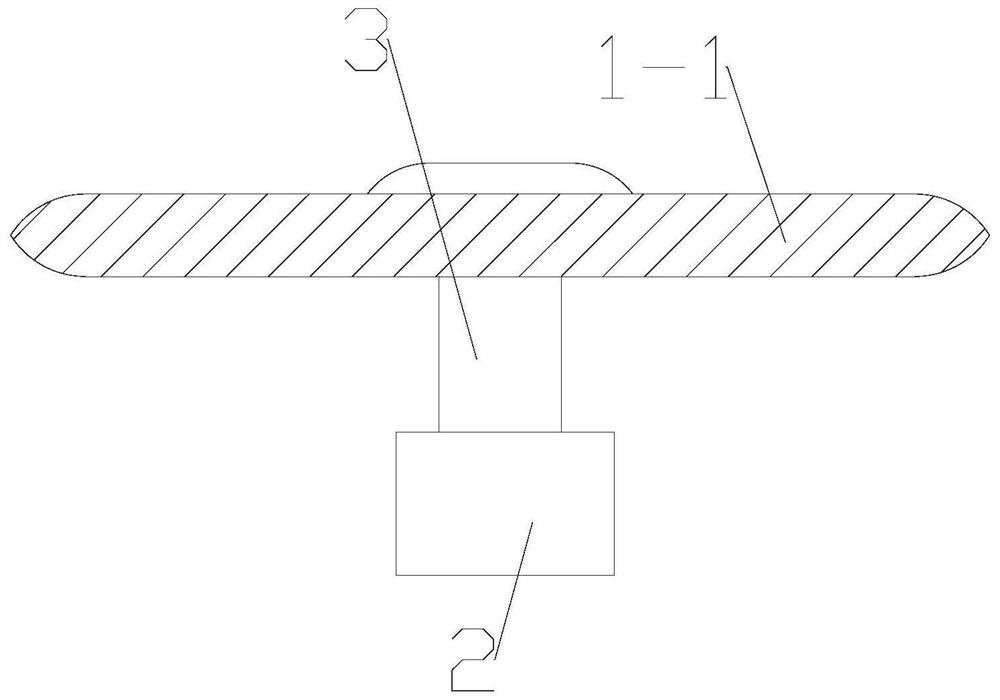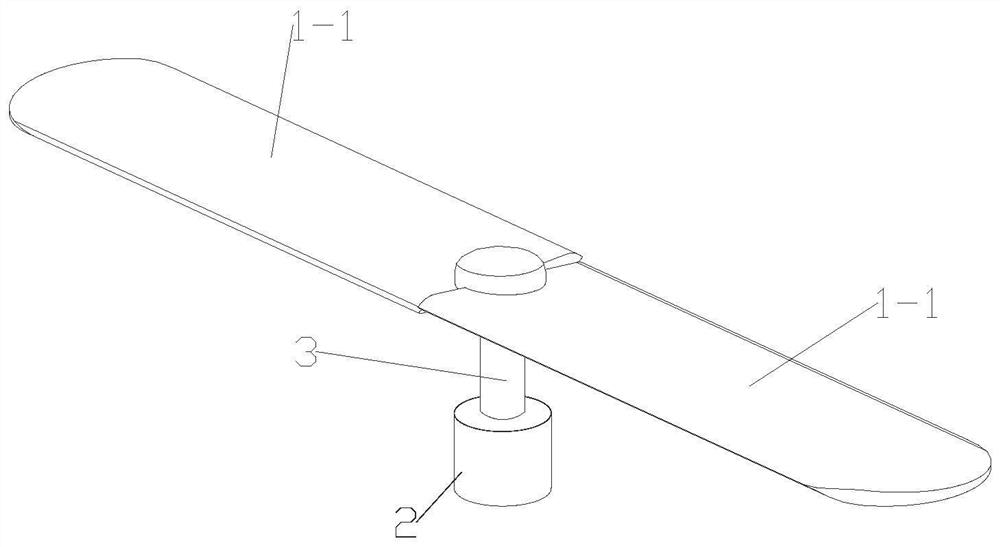Intelligent wing and application
A wing and intelligent technology, applied in the field of flight, can solve the problems of accident-prone and slow flight speed, and achieve the effect of reasonable structural design and avoiding direct crash
- Summary
- Abstract
- Description
- Claims
- Application Information
AI Technical Summary
Problems solved by technology
Method used
Image
Examples
Embodiment 1
[0046] Such as Figure 14 shown, for the use of figure 1 The new type of rotorcraft improved by the wing body of the structure, the improvement is to replace the windmill that generates the lift of the original rotorcraft with the figure 1 Structured Smart Wing, figure 1The intelligent wing of the structure is a piece of flat plate driven by rotating power. The rotation speed can be controlled and adjusted by adjusting the rotation speed of the rotating shaft, because the rotating flat plate can be operated without energy loss under ideal conditions after obtaining a stable starting speed. For inertial rotation, although we cannot achieve the ideal state, we can still achieve less energy consumption, that is, a little power can ensure that the smart wing works in the best state. The principle of the smart wing generating lift is the same as that of the windmill. From the theory Both experiments and experiments can prove that under the same conditions, the lift generated by t...
Embodiment 2
[0048] Such as Figure 13 The aircraft shown is the image 3 A four-rotor aircraft with improved wing body structure, image 3 The bottom of the section of the main working surface of the structural wing body is parallel to the vertical plane of the rotating shaft. When the rotating shaft drives the split wings to rotate, it is equivalent to a fixed-wing aircraft flying horizontally. The faster the wing rotates, it is equivalent to a fixed-wing aircraft. The faster you fly in the level, the greater the lift, of course. Figure 13 Among them, as long as the speed of the smart wing is controlled, it can fly like a common quadrotor. If you want to fly horizontally and fast, start the propeller 12, that is, the horizontal engine, and adjust the aircraft so that the smart wing has a suitable direction for the horizontal flight. At this time, the smart wing is equivalent to the wing of a fixed-wing aircraft, and the principle of generating lift is the same, so this aircraft can fl...
Embodiment 3
[0050] Figure 11 It is a new type of tilt-rotor aircraft equipped with intelligent wings. Its working principle is: when the aircraft is in the process of vertical take-off and landing, hovering, and the transition between parallel flight and vertical take-off and landing, the intelligent wing executes the flight mode of a quadrotor aircraft , when the aircraft is flying in parallel, the dual-purpose propeller 14 of the aircraft rotates to the same position and direction of the propeller in embodiment 2, and the working state is the same as that of the embodiment 2 when the aircraft is flying horizontally, that is, the horizontal flight mode of the fixed-wing aircraft, of course the aircraft Also flies fast. Compared with ordinary tiltrotor aircraft, the aircraft with intelligent wings can realize the same flight mode as ordinary quadrotor aircraft during vertical take-off and landing, hovering and conversion, so the aircraft is very stable and safe .
[0051] Figure 8-15...
PUM
 Login to View More
Login to View More Abstract
Description
Claims
Application Information
 Login to View More
Login to View More - R&D
- Intellectual Property
- Life Sciences
- Materials
- Tech Scout
- Unparalleled Data Quality
- Higher Quality Content
- 60% Fewer Hallucinations
Browse by: Latest US Patents, China's latest patents, Technical Efficacy Thesaurus, Application Domain, Technology Topic, Popular Technical Reports.
© 2025 PatSnap. All rights reserved.Legal|Privacy policy|Modern Slavery Act Transparency Statement|Sitemap|About US| Contact US: help@patsnap.com



